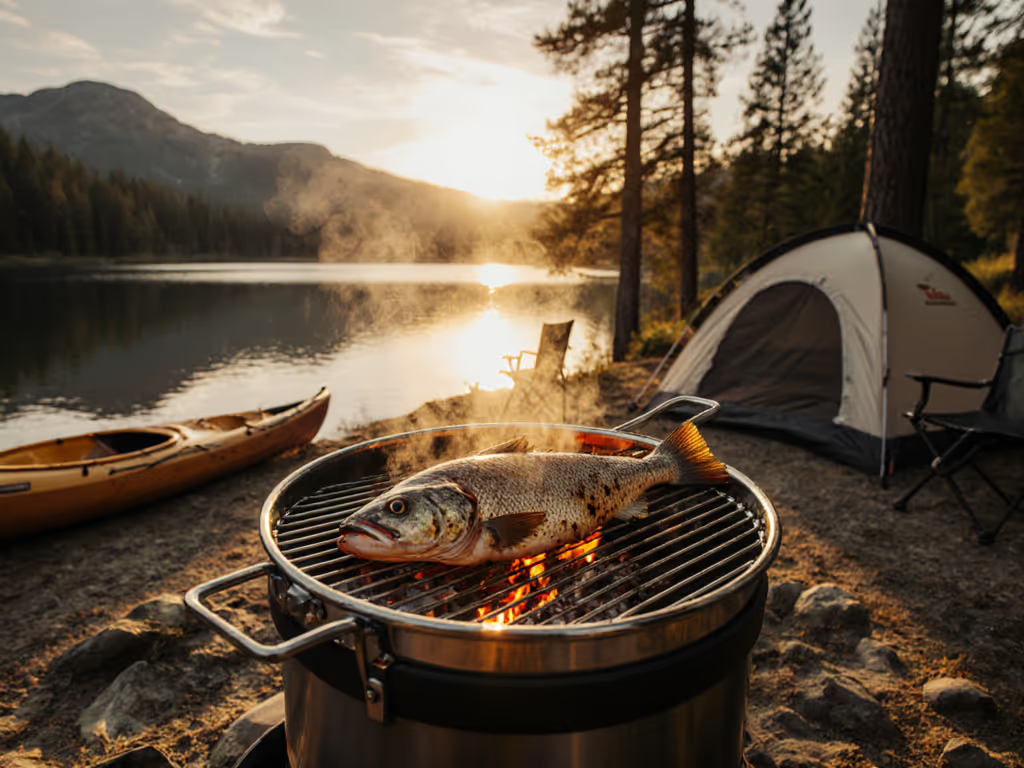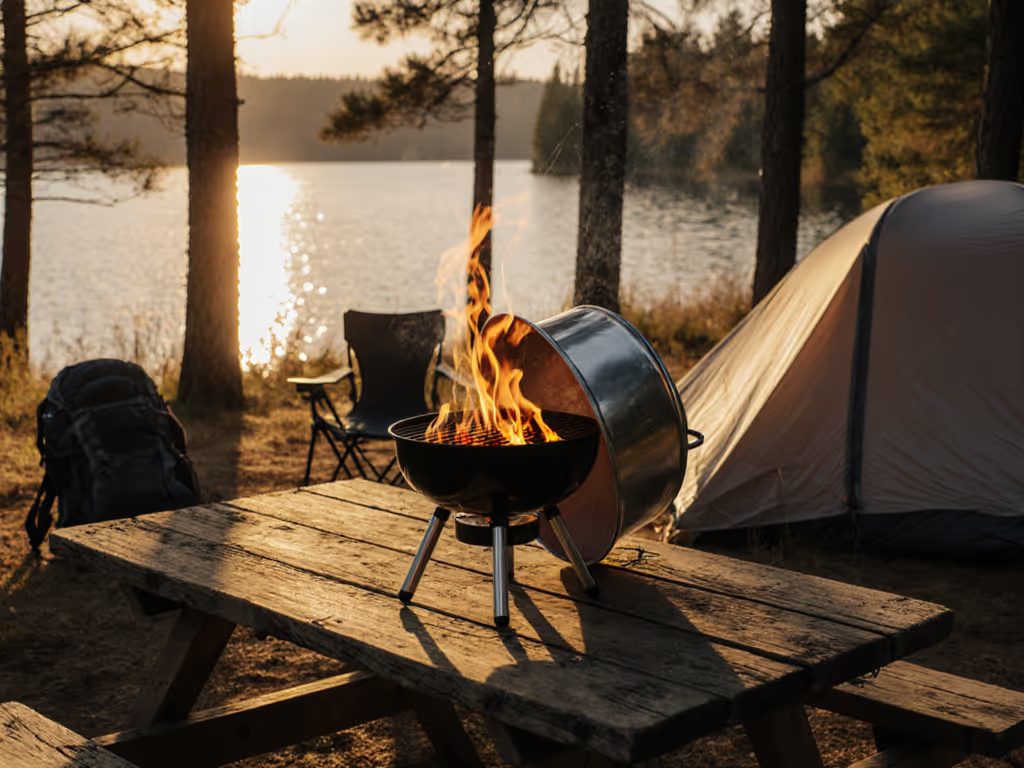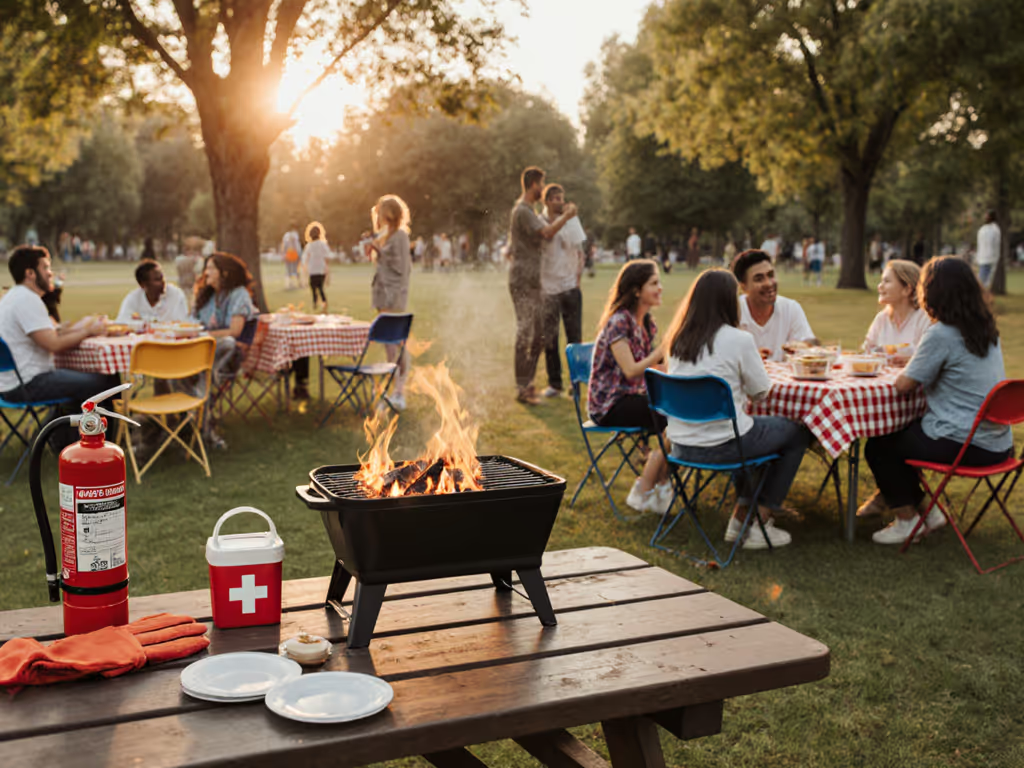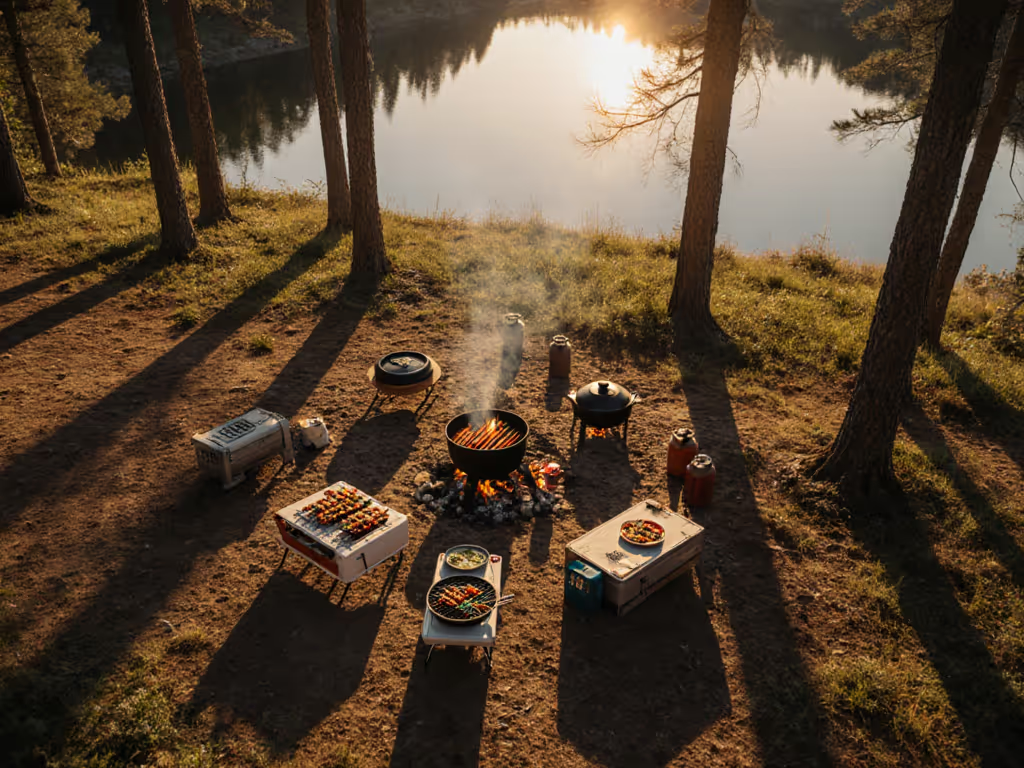
Urban Grill Storage Compared: Compact Space Solutions
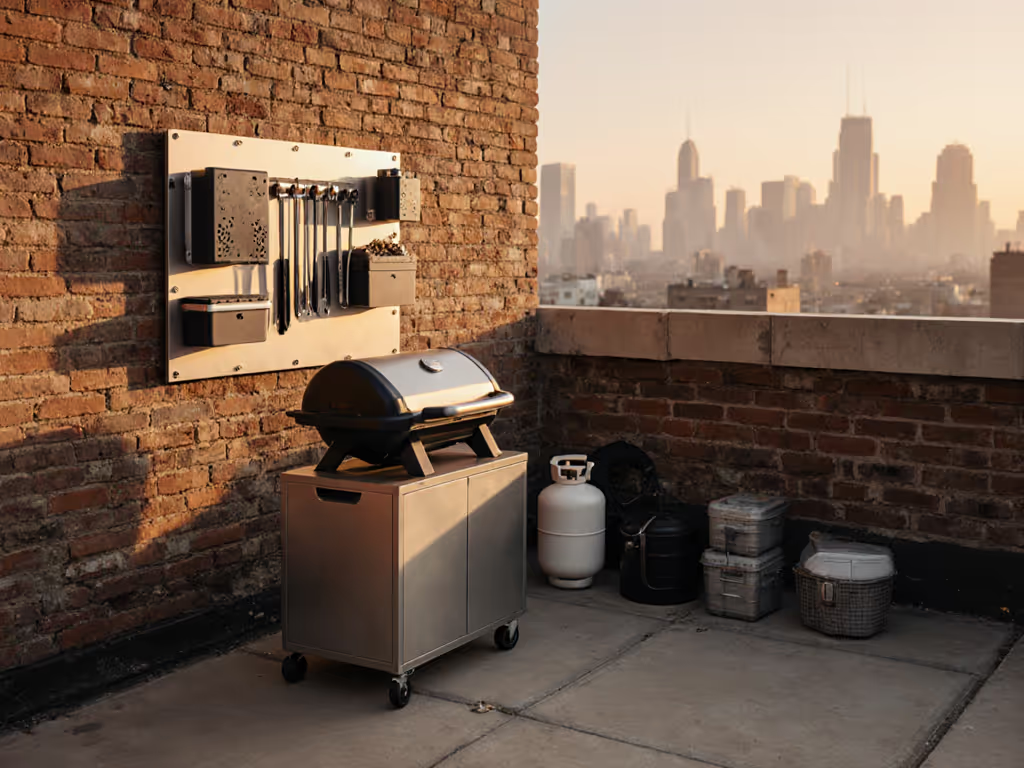
When your balcony is smaller than your grill, urban grill storage becomes less of a convenience and more of a regulatory necessity. As cities tighten restrictions on open flames and ban charcoal in multi-unit dwellings, the right compact grill solution means the difference between backyard cookouts and cold sandwiches. Having navigated fire bans from Vancouver's False Creek to Miami's urban beaches, I've learned that compliant storage isn't just about space, it's about respecting neighbors, meeting fire codes, and ensuring your gear works when regulations shift mid-adventure. Heat you can explain to a ranger, pack you can trust.
Why Urban Grill Storage Isn't Just About Square Footage
How do city fire regulations impact my storage choices?
Urban fire codes often dictate what you can store, and where. Most major cities now prohibit charcoal storage on balconies (New York City Fire Code §903.1.2) and require propane tanks to be stored upright in ventilated areas at least 10 feet from building entrances. The 2023 National Fire Protection Association report shows 27% of urban grill fires originate from improper fuel storage, particularly when tanks are kept in enclosed spaces like apartment closets or RV compartments where gas can accumulate. For more on staying compliant and safe in small spaces, see our portable grilling safety guide.
Your storage solution must balance three non-negotiable factors:
- Regulatory compliance: Verify local codes using your city's fire department "Open Burning Regulations" portal
- Material safety: Never store fuel in enclosed plastic bins that trap vapors
- Accessibility: Fuel and grill must be reachable within 30 seconds for emergency shutdown
"In my decade of environmental education work, I've seen more citations for improper storage than unsafe grilling. Store propane outside your dwelling, charcoal in airtight metal containers away from living spaces, and never keep your grill assembled on combustible surfaces like wood decks."
What's the biggest misconception about apartment grill storage?
"If I can't see it, it's compliant" is a dangerous assumption that leads to fire hazards. Many renters store grills folded inside stairwells or storage lockers, unaware these are fire egress routes prohibited by International Fire Code §1024. Proper storage means keeping equipment:
- In dedicated outdoor storage (with weather protection)
- Disassembled (grills packed down to component parts)
- Away from combustible materials (minimum 3-foot clearance)
For true apartment grill solutions, consider the Snow Peak Takibi Fire & Grill, a foldable system that collapses to 5.4" thick, meeting NYC's 6" maximum balcony storage depth requirement for non-combustible items. Its stainless steel construction (tested to ASTM A262 for corrosion resistance) withstands coastal humidity that would pit cheaper materials within one season. If you're weighing storage trade-offs, our compact vs full-size guide breaks down capacity versus pack-down depth for small balconies.
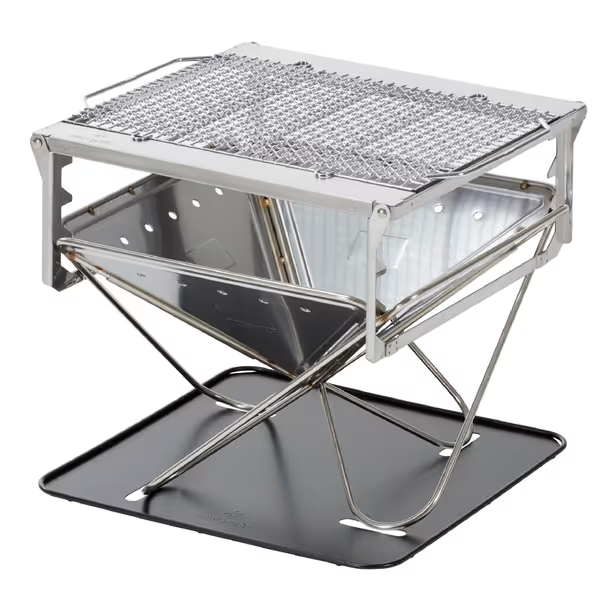
Snow Peak Takibi Fire & Grill
Smart Storage Strategies for Tiny Spaces
How can I maximize minimal space with vertical grill organization?
When square footage is precious, think vertically. Mounting solutions must address both space constraints and safety regulations:
Wall-Mounted Systems
- Permitted configurations: Only non-combustible grills (electric or gas) may be mounted within 18" of building exteriors per ICC ES AC30 (2022)
- Optimal height: Install hooks 48-60" above ground to prevent child access while allowing adult retrieval
- Material requirements: Use stainless steel anchors rated for outdoor use (avoid zinc-coated hardware that corrodes in 12-18 months)
Rolling Solutions for Micro-Spaces
My preferred approach for small space storage involves mobile units that convert to cooking stations:
- Dual-purpose carts: Must have lockable wheels meeting ASTM F1975 safety standards
- Hidden compartments: Store fuel in ventilated lower bins (never directly beneath grill surface)
- Stability check: Load-tested to 150 lbs minimum to prevent tipping on uneven surfaces
The NOELIFE Padded Carry Bag for Weber grills exemplifies smart urban storage. It transforms your propane grill into a self-contained unit with dedicated pockets for regulators and tools, eliminating the "where do I put everything" panic. At 2.09 lbs, it's light enough for elevator transport yet rugged enough to protect against concrete balcony abrasion. Prefer models that include protective cases? Browse our portable grills with carry cases for transport-ready picks.

NOELIFE Padded Carry Bag for Weber Q Grills
What storage mistakes do RV and van owners make?
RV grill storage requires special considerations most overlook:
- Vibration damage: Unsecured grills shift during travel, warping legs and creating gas leaks
- Ventilation gaps: Fuel storage compartments must have 2+ square inches of ventilation per NFPA 54
- Thermal expansion: Propane tanks in enclosed spaces can exceed 120°F, triggering pressure relief valves
For mobile setups, I recommend the Blackstone 22" Tabletop Griddle. It stores flat against RV cabinetry with its low 9" profile and includes a grease management system that prevents post-cook drips from corroding storage compartments. The powder-coated steel resists the salt-air corrosion that plagues coastal RV parks.

Blackstone 22" Tabletop Griddle (1666)
The Compliance Checklist: Storage That Passes Inspection
What elements must my storage solution include to avoid citations?
Urban fire marshals routinely inspect common area storage. Your system should pass this 5-point audit:
| Audit Point | Safe Solution | Risky Alternative |
|---|---|---|
| Fuel Storage | Tanks upright in ventilated compartment | Laying tanks horizontally in enclosed space |
| Clearance | 36" clearance from combustibles | Storage against wood decks or vinyl siding |
| Accessibility | Unobstructed emergency access | Behind furniture or locked cabinets |
| Weather Protection | UV-resistant covers with ventilation | Plastic tarps that trap moisture |
| Material Integrity | Rust-resistant metals (stainless, powder-coated steel) | Galvanized steel that corrodes in coastal air |
How do I organize accessories without creating hazards?
The "where do I put the stuff" dilemma leads many urban grillers to unsafe practices like storing lighters in grill drawers (fire risk) or leaving tools exposed to rain (corrosion). Implement this cleanup checklist:
- Post-cook: Cool tools completely before storage (minimum 2-hour wait)
- Dry thoroughly: Even residual moisture accelerates rust in coastal climates
- Categorize: Group by function (ignition, cooking, cleaning) in separate containers
- Secure: Use latched storage to prevent rattling during transport
- Inspect: Monthly check for rust, wear, or fuel leaks before storage
For beach-to-balcony users, I've found a magnetic tool strip mounted inside storage cabinet doors keeps utensils visible yet secured. No more hunting for tongs while dinner burns. Just ensure the strip is rated for outdoor humidity (look for neodymium magnets with nickel plating). To keep gear inspection-ready, follow our cleaning and maintenance guide.
When Rules Change: The Mobile Griller's Survival Guide
How can I adapt storage when fire bans hit?
Urban fire restrictions often change with weather conditions. During California's 2022 fire season, I watched a ranger upgrade restrictions from "no charcoal" to "no open flame devices" mid-float trip. My contained Blackstone griddle with electronic ignition passed inspection because:
- It had a spark screen (required for all gas devices under new rules)
- Fuel storage was separated from cooking surface
- Cleanup took 90 seconds with no residual ash
This is where your storage system proves its value. When regulations shift, you need:
- Quick-disassembly grills: Systems that break down in <2 minutes
- Modular storage: Compartments that reconfigure for different fuel types
- Regulation-ready documentation: Keep city code excerpts in your storage unit
What's the most overlooked storage consideration for urban grilling?
Neighbor relations. Nothing gets your grill confiscated faster than complaints about smoke drifting into adjacent units. Proper storage includes smoke management:
- Position storage area downwind from neighboring units
- Choose electric or infrared grills for smoke-sensitive areas
- Use storage containers that double as windbreaks during cooking
I once avoided a ban in a Seattle apartment complex by storing my Takibi Fire & Grill in a repurposed shipping container mounted on casters. It kept it clean, prevented neighbor complaints, and met all fire codes. That's when I realized: the best storage solutions don't just hide your grill, they help you leave it cleaner than you found it.
Final Considerations for the Urban Griller
Your storage system is the unsung hero of urban grilling. When regulations tighten or space shrinks, it determines whether you cook or compromise. Focus on three pillars: regulatory compliance, rust resistance, and rapid reconfiguration. For seasonal shutdowns and long-term care, see our winter storage guide. Remember that joyful outdoor cooking leaves no trace and meets the rules every time, even when conditions change faster than your meal cooks.
For those ready to deepen their understanding of urban fire regulations and responsible grilling:
- Download your city's fire code amendments (updated quarterly)
- Join the National Fire Protection Association's community grilling workshops
- Explore the Outdoor Power Equipment Institute's storage certification guidelines
The difference between a frustrating false start and a seamless cookout often comes down to how you store your gear when flames aren't flying. Because in urban spaces, the most important part of grilling happens before you even strike a match.

